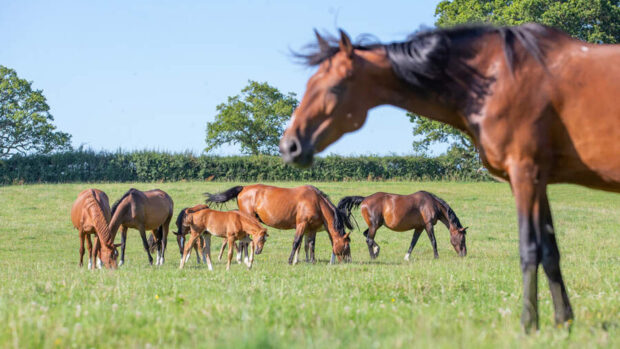The British eventing squad’s chef d’equipe, Yogi Breisner talks us through what we need to know ahead of going cross-country, with the help of Laura Collett.
Cross-country riding is split into three sections:
– The time in between fences where you treat your horse a little like a racehorse and make use of gallop
– Preparation for the jump
– The jump itself
The rider’s responsibility is to put the horse in balance, establish the correct speed, going in the correct direction.
How to ride cross-country: the correct rider position
Galloping position
It is important that when galloping between fences on the cross-country course, the rider’s stirrups must be at the correct length (there must be a nice angle at the knee and in a place where the lower leg can remain secure.). You can test the length by standing up in the stirrups where there must still be an angle at the knee so that they can absorb shock as you ride around the course.
Hands must be in line with the rider’s head while stood in the stirrups as should be the shoulder and the knee.
Approach to the fence
The position of the rider on the approach to the fence will depend on what type of fence lies ahead.
If it is a straightforward fence then the rider can remain a little out of the saddle, just bringing their shoulders back. This allows the horse to re-balance but still jump the fence out of its stride.
If it is a more difficult fence, the rider will sit in the saddle and bring their shoulders back, while keeping their lower leg in the same, forward, secure position.
If the horse is spooking or thinking about stopping, the rider will need to bring their shoulders even further back, sitting deeper in the saddle, so that they are in a stronger position to push the horse forward.
You do not need to be on a cross-country course to practise your cross-country positions. This can be done in an arena or while out hacking.



